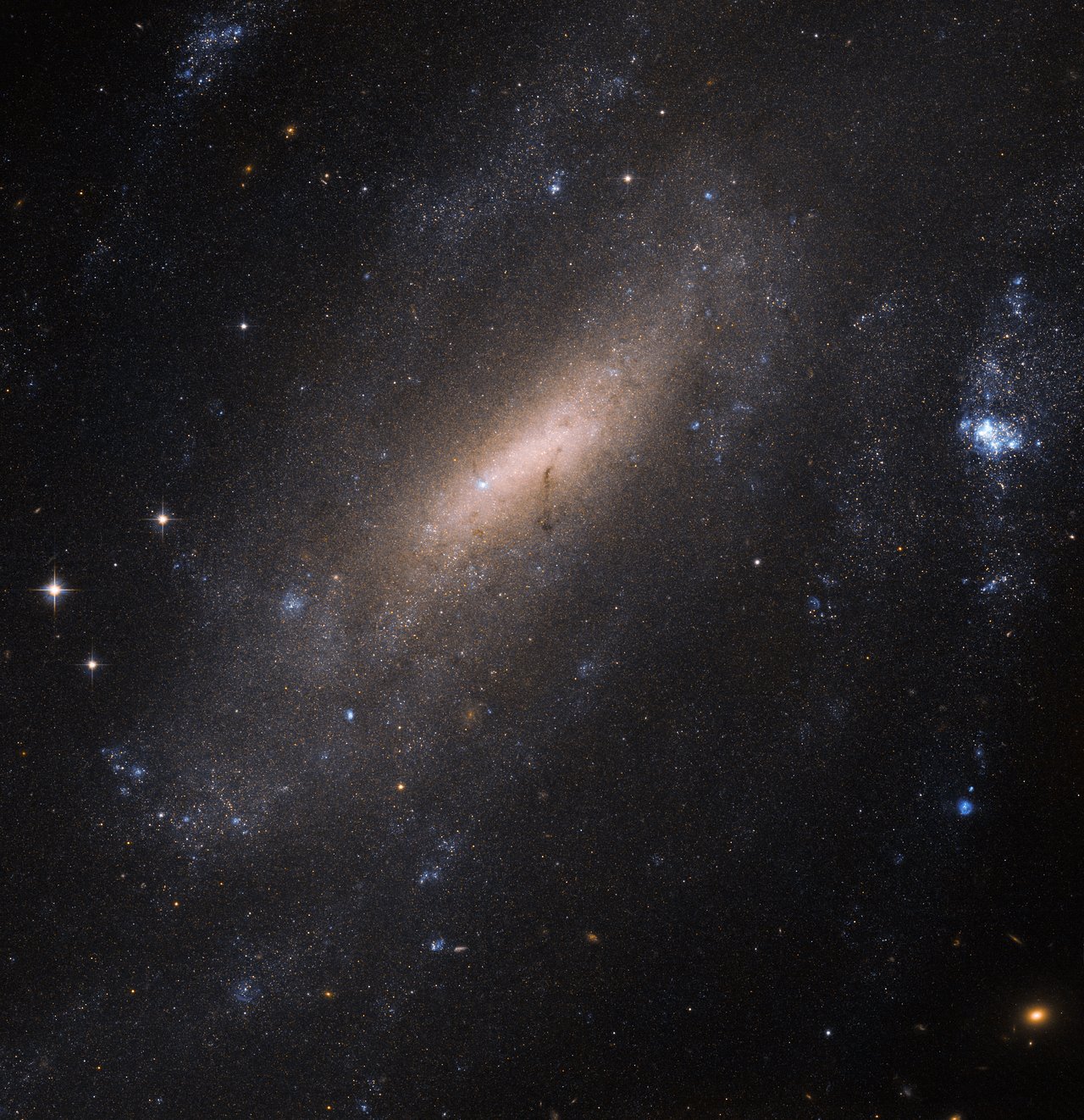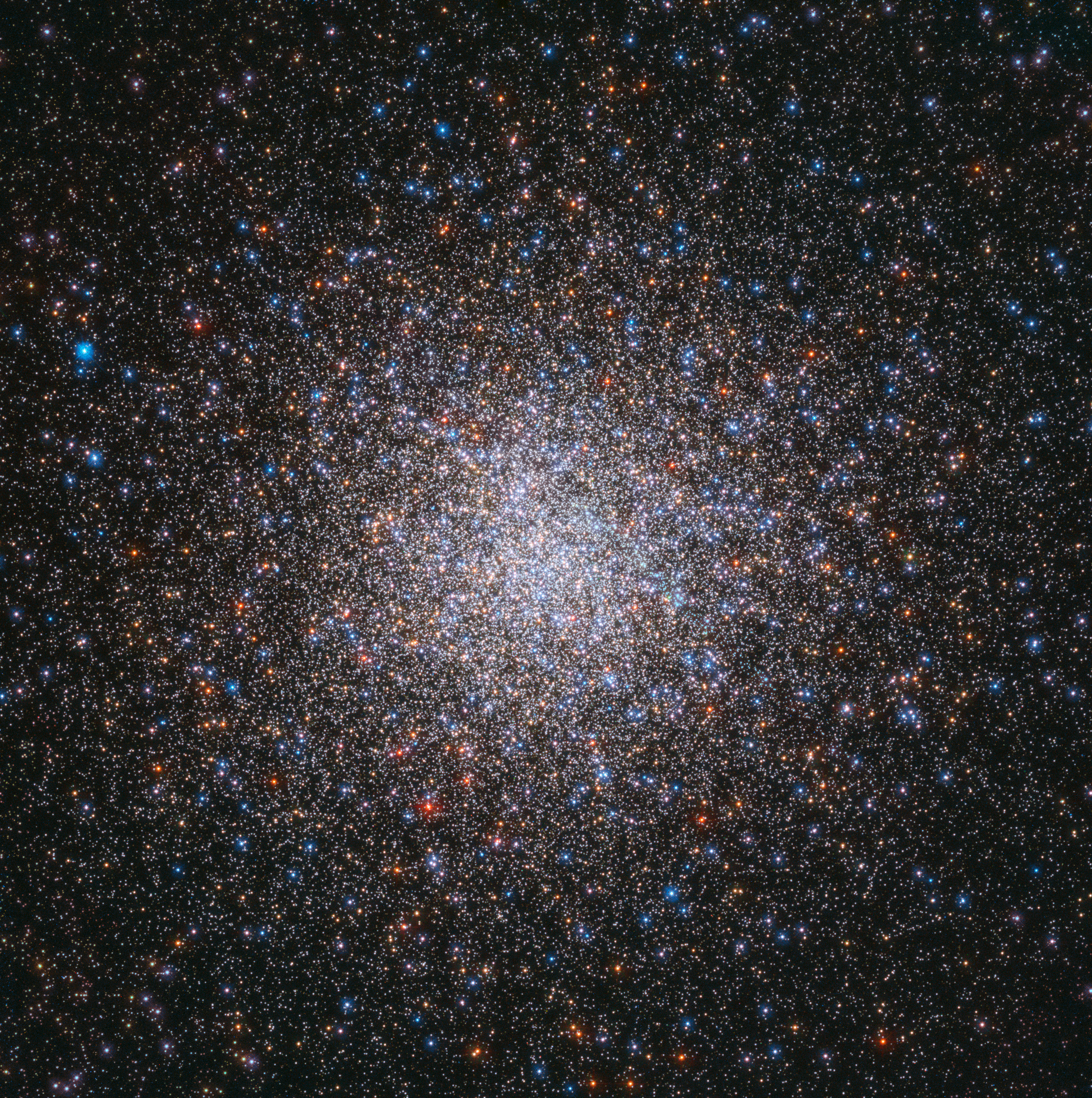|
Messier 91
Messier 91 (also known as NGC 4548 or M91) is a barred spiral galaxy that is found in the south of Coma Berenices. It is in the local supercluster and is part of the Virgo Cluster of galaxies. It is about 63 million light-years away from our galaxy. It was the last of a group of eight "nebulae" – the term 'galaxy' only coming into use for these objects once it was realized in the 20th century that they were extragalactic – discovered by Charles Messier in 1781. It is the faintest object in the Messier catalog. Because of a bookkeeping error by Messier, M91 was for a long time one of the few missing entries in the Messier catalog, not matching any known object in the sky. It was not until 1969 that amateur astronomer William C. WilliamsWilliam C. WilliamsLetter Sky and Telescope, December 1969, p. 376. Accessed 13 April 2011 realized that M91 was NGC 4548,Students for the Exploration and Development of Spac Accessed online 14 April 2011 which was catalogued by William ... [...More Info...] [...Related Items...] OR: [Wikipedia] [Google] [Baidu] |
Messier Object
The Messier objects are a set of 110 astronomical objects catalogued by the French astronomer Charles Messier in his ''Catalogue des Nébuleuses et des Amas d'Étoiles'' (''Catalogue of Nebulae and Star Clusters''). Because Messier was only interested in finding comets, he created a list of those non-comet objects that frustrated his hunt for them. The compilation of this list, in collaboration with his assistant Pierre Méchain, is known as ''the Messier catalogue''. This catalogue of objects is one of the most famous lists of astronomical objects, and many Messier objects are still referenced by their Messier numbers. The catalogue includes most of the astronomical deep-sky objects that can easily be observed from Earth's Northern Hemisphere; many Messier objects are popular targets for amateur astronomers. A preliminary version first appeared in 1774 in the ''Memoirs'' of the French Academy of Sciences for the year 1771. The first version of Messier's catalogue con ... [...More Info...] [...Related Items...] OR: [Wikipedia] [Google] [Baidu] |
Charles Messier
Charles Messier (; 26 June 1730 – 12 April 1817) was a French astronomer. He published an astronomical catalogue consisting of 110 nebulae and star clusters, which came to be known as the ''Messier objects''. Messier's purpose for the catalogue was to help astronomical observers distinguish between permanent and transient visually diffuse objects in the sky. Biography Messier was born in Badonviller in the Lorraine region of France, the tenth of twelve children of Françoise B. Grandblaise and Nicolas Messier, a Court usher. Six of his brothers and sisters died while young, and his father died in 1741. Charles' interest in astronomy was stimulated by the appearance of the great six-tailed comet in 1744 and by an annular solar eclipse visible from his hometown on 25 July 1748. In 1751, Messier entered the employ of Joseph Nicolas Delisle, the astronomer of the French Navy, who instructed him to keep careful records of his observations. Messier's first d ... [...More Info...] [...Related Items...] OR: [Wikipedia] [Google] [Baidu] |
NGC Objects
The ''New General Catalogue of Nebulae and Clusters of Stars'' (abbreviated NGC) is an astronomical catalogue of deep-sky objects compiled by John Louis Emil Dreyer in 1888. The NGC contains 7,840 objects, including galaxies, star clusters and emission nebulae. Dreyer published two supplements to the NGC in 1895 and 1908, known as the ''Index Catalogues'' (abbreviated IC), describing a further 5,386 astronomical objects. Thousands of these objects are best known by their NGC or IC numbers, which remain in widespread use. The NGC expanded and consolidated the cataloguing work of William and Caroline Herschel, and John Herschel's '' General Catalogue of Nebulae and Clusters of Stars''. Objects south of the celestial equator are catalogued somewhat less thoroughly, but many were included based on observation by John Herschel or James Dunlop. The NGC contained multiple errors, but attempts to eliminate them were made by the ''Revised New General Catalogue'' (RNGC) by Jack W. ... [...More Info...] [...Related Items...] OR: [Wikipedia] [Google] [Baidu] |
Messier Objects
The Messier objects are a set of 110 astronomical objects catalogued by the French astronomer Charles Messier in his ''Catalogue des Nébuleuses et des Amas d'Étoiles'' (''Catalogue of Nebulae and Star Clusters''). Because Messier was only interested in finding comets, he created a list of those non-comet objects that frustrated his hunt for them. The compilation of this list, in collaboration with his assistant Pierre Méchain, is known as ''the Messier catalogue''. This catalogue of objects is one of the most famous lists of astronomical objects, and many Messier objects are still referenced by their Messier numbers. The catalogue includes most of the astronomical deep-sky objects that can easily be observed from Earth's Northern Hemisphere; many Messier objects are popular targets for amateur astronomers. A preliminary version first appeared in 1774 in the ''Memoirs'' of the French Academy of Sciences for the year 1771. The first version of Messier's catalogue contain ... [...More Info...] [...Related Items...] OR: [Wikipedia] [Google] [Baidu] |
Barred Spiral Galaxies
A barred spiral galaxy is a spiral galaxy with a central bar-shaped structure composed of stars. Bars are found in about two thirds of all spiral galaxies, and generally affect both the motions of stars and interstellar gas within spiral galaxies and can affect spiral arms as well. The Milky Way Galaxy, where the Solar System is located, is classified as a barred spiral galaxy. Edwin Hubble classified spiral galaxies of this type as "SB" (spiral, barred) in his Hubble sequence and arranged them into sub-categories based on how open the arms of the spiral are. SBa types feature tightly bound arms, while SBc types are at the other extreme and have loosely bound arms. SBb-type galaxies lie in between the two. SB0 is a barred lenticular galaxy. A new type, SBm, was subsequently created to describe somewhat Barred irregular galaxy, irregular barred spirals, such as the Magellanic Clouds, which were once classified as irregular galaxies, but have since been found to contain barred spira ... [...More Info...] [...Related Items...] OR: [Wikipedia] [Google] [Baidu] |
List Of Messier Objects
The Messier objects are a set of 110 astronomical objects catalogued by the French astronomer Charles Messier in his ''Catalogue des Nébuleuses et des Amas d'Étoiles'' (''Catalogue of Nebulae and Star Clusters''). Because Messier was only interested in finding comets, he created a list of those non-comet objects that frustrated his hunt for them. The compilation of this list, in collaboration with his assistant Pierre Méchain, is known as ''the Messier catalogue''. This catalogue of objects is one of the most famous lists of astronomical objects, and many Messier objects are still referenced by their Messier numbers. The catalogue includes most of the astronomical deep-sky objects that can easily be observed from Earth's Northern Hemisphere; many Messier objects are popular targets for amateur astronomers. A preliminary version first appeared in 1774 in the ''Memoirs'' of the French Academy of Sciences for the year 1771. The first version of Messier's catalogue cont ... [...More Info...] [...Related Items...] OR: [Wikipedia] [Google] [Baidu] |
Anemic Galaxy
An anemic galaxy is a type of spiral galaxy characterized by a low contrast between its spiral arms and its disk. Etymology The term was coined in 1976 by the Canadian astronomer Sidney van den Bergh to classify galaxies that are an intermediate form between the gas-rich, star-forming spiral galaxies and the gas-poor, inactive lenticular galaxies. Characteristics Anemic galaxies not only show spiral arms of low contrast but also a low content and density of neutral hydrogen (the raw material needed to form stars), redder colours than a normal spiral, fewer H II regions, and thus a low star formation activity. At first it was believed their molecular hydrogen content was similar to that of a normal spiral, but subsequent studies have shown that a number of them are deficient in molecular gas. Anemic galaxies should not be confused with galaxies with red colors due to a low star formation activity but which show a normal content of neutral gas, as is the case of the ... [...More Info...] [...Related Items...] OR: [Wikipedia] [Google] [Baidu] |
Recessional Velocity
Recessional velocity is the rate at which an extragalactic astronomical object recedes (becomes more distant) from an observer as a result of the expansion of the universe. It can be measured by observing the wavelength shifts of spectral lines emitted by the object, known as the object's cosmological redshift. Application to cosmology Hubble's law is the relationship between a galaxy's distance and its recessional velocity, which is approximately linear for galaxies at distances of up to a few hundred megaparsecs. It can be expressed as :v_r = H_0 D\ + v_ where H_0 is the Hubble constant, D is the proper distance, v_r is the object's recessional velocity, and v_ is the object's peculiar velocity. The recessional velocity of a galaxy can be calculated from the redshift observed in its emitted spectrum. One application of Hubble's law is to estimate distances to galaxies based on measurements of their recessional velocities. However, for relatively nearby galaxies the peculiar ... [...More Info...] [...Related Items...] OR: [Wikipedia] [Google] [Baidu] |
Arcminute
A minute of arc, arcminute (arcmin), arc minute, or minute arc, denoted by the symbol , is a unit of angular measurement equal to of one degree. Since one degree is of a turn (or complete rotation), one minute of arc is of a turn. The nautical mile (nmi) was originally defined as the arc length of a minute of latitude on a spherical Earth, so the actual Earth circumference is very near . A minute of arc is of a radian. A second of arc, arcsecond (arcsec), or arc second, denoted by the symbol , is of an arcminute, of a degree, of a turn, and (about ) of a radian. These units originated in Babylonian astronomy as sexagesimal subdivisions of the degree; they are used in fields that involve very small angles, such as astronomy, optometry, ophthalmology, optics, navigation, land surveying, and marksmanship. To express even smaller angles, standard SI prefixes can be employed; the milliarcsecond (mas) and microarcsecond (μas), for instance, are commonly used in ... [...More Info...] [...Related Items...] OR: [Wikipedia] [Google] [Baidu] |
Messier 89
Messier 89 (M89 for short, also known as NGC 4552) is an elliptical galaxy in the constellation Virgo. It was discovered by Charles Messier on March 18, 1781. M89 is a member of the Virgo Cluster of galaxies. Features Current observations allow the possibility that M89 may be nearly perfectly spherical. Distinct flattening as ellipsoids is found in all easily measurable comparators up to a few times of its distance. The alternative explanation is that it is an ellipsoid oriented so that it appears spherical to an observer on Earth. The galaxy features a surrounding structure of gas and dust, extending up to 150,000 light-years and jets of heated particles up to two-thirds of that. This indicates that it may have once been an active quasar or radio galaxy. M89 has an extensive and complex system of surrounding shells and plumes, indicating that it has seen one or several notable mergers. Chandra studies in the wavelength of the X-Rays show two ring-like structures of hot gas ... [...More Info...] [...Related Items...] OR: [Wikipedia] [Google] [Baidu] |
Messier 58
Messier 58 (also known as ''M58'' and ''NGC 4579'') is an intermediate barred spiral galaxy with a weak inner ring structure located within the constellation Virgo, approximately 68 million light-years away from Earth. It was discovered by Charles Messier on April 15, 1779 and is one of four barred spiral galaxies that appear in Messier's catalogue.The other barred spiral galaxies in Messier's catalogue are Messier 91, Messier 95 and Messier 109 M58 is one of the brightest galaxies in the Virgo Cluster. From 1779 it was arguably (though unknown at that time) the farthest known astronomical object until the release of the New General Catalogue in the 1880s and even more so the publishing of redshift values in the 1920s. Early observations Charles Messier discovered Messier 58, along with the elliptical galaxies Messier 59 and Messier 60, on April 15, 1779. M58 was reported on the chart of the Comet of 1779 as it was almost on the same parallel as the star Epsilon Virgin ... [...More Info...] [...Related Items...] OR: [Wikipedia] [Google] [Baidu] |








